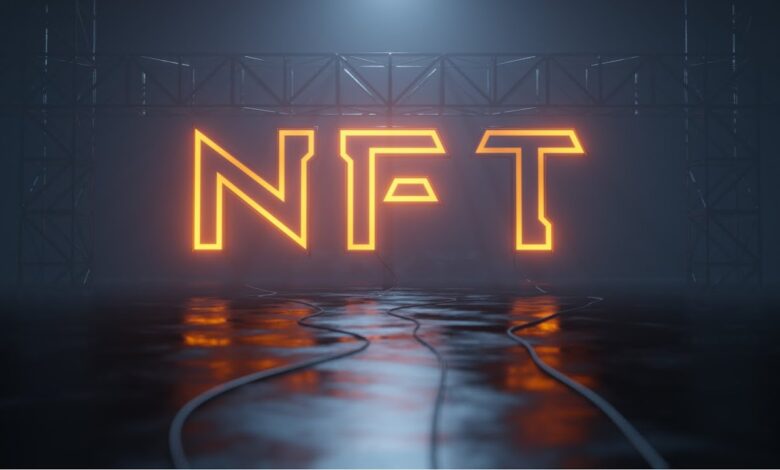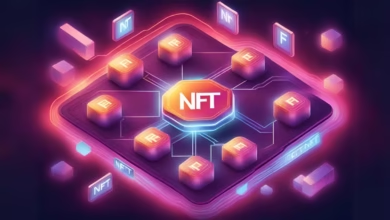NFT Environmental Impact Complete Guide to Carbon Footprint & Sustainability (2025)

The NFT environmental impact has become one of the most debated topics in the digital art and blockchain space. As non-fungible tokens continue to revolutionize how we think about digital ownership, concerns about their environmental consequences have sparked intense discussions among artists, collectors, and environmental advocates. Understanding the true environmental cost of NFTs requires examining the underlying blockchain technology, energy consumption patterns, and emerging sustainable alternatives that are reshaping the industry.
The conversation around NFT environmental impact isn’t just about energy consumption—it encompasses the broader implications of blockchain technology on our planet’s resources. From the massive server farms powering proof-of-work networks to the innovative solutions emerging through proof-of-stake systems, the landscape is rapidly evolving. This comprehensive guide explores every aspect of how NFTs affect our environment and what the future holds for sustainable digital collectibles.
Understanding the NFT Environmental Impact: The Basics
What Makes NFTs Environmentally Controversial
The primary concern surrounding NFT environmental impact stems from the energy-intensive nature of blockchain networks, particularly those using proof-of-work (PoW) consensus mechanisms. When NFTs first gained mainstream attention, most were minted on Ethereum, which at the time operated on a PoW system requiring enormous computational power to validate transactions and secure the network.
Each NFT transaction—whether minting, buying, or selling—required network validation through complex mathematical calculations performed by thousands of computers worldwide. This process, known as mining, consumed substantial amounts of electricity, often sourced from fossil fuel-powered energy grids. The cumulative effect of millions of NFT transactions created a significant carbon footprint that environmentalists and critics couldn’t ignore.
However, the NFT environmental impact varies dramatically depending on the blockchain platform used. While Ethereum’s transition to proof-of-stake has reduced energy consumption by over 99%, many people still associate NFTs with their earlier environmental costs. Understanding these nuances is crucial for making informed decisions about NFT participation and supporting sustainable practices in the digital art space.
The Carbon Footprint Calculation Challenge
Calculating the precise NFT environmental impact presents unique challenges that often lead to conflicting reports and misunderstandings. Unlike traditional industries where emissions can be directly measured, blockchain networks distribute energy consumption across global networks of computers, making accurate assessments complex.
Several factors complicate carbon footprint calculations for NFTs. First, the energy consumption varies significantly between different blockchain networks. Second, the source of electricity powering mining operations differs globally, with some regions relying heavily on renewable energy while others depend on coal and natural gas. Third, the shared nature of blockchain networks means that NFT transactions represent only a fraction of total network activity, making it difficult to attribute specific environmental costs to individual NFTs.
Research methodologies also vary, with some studies focusing on per-transaction energy consumption while others examine the marginal impact of additional network activity. These different approaches can yield vastly different estimates, ranging from the equivalent of a few hours of household electricity consumption to several tons of CO2 emissions per NFT. Understanding these methodological differences is essential for evaluating claims about NFT environmental impact.
Blockchain Technology and Energy Consumption
Proof of Work vs. Proof of Stake Environmental Implications
The NFT environmental impact is intrinsically linked to the consensus mechanism used by the underlying blockchain network. Proof-of-work systems, like Bitcoin and pre-2022 Ethereum, require miners to solve computationally intensive puzzles to validate transactions and add new blocks to the chain. This process demands enormous amounts of electrical energy and powerful hardware, contributing significantly to carbon emissions.
In contrast, proof-of-stake (PoS) systems validate transactions through a fundamentally different mechanism that requires validators to “stake” their cryptocurrency rather than compete through computational power. This approach reduces energy consumption by approximately 99% compared to proof-of-work systems, dramatically lowering the environmental impact of NFT transactions on PoS networks.
The transition of major blockchain networks to proof-of-stake represents a pivotal moment for NFT environmental sustainability. Ethereum’s successful migration to PoS in September 2022, known as “The Merge,” eliminated the vast majority of the network’s energy consumption overnight. This change transformed the environmental profile of Ethereum-based NFTs from one of the most energy-intensive digital activities to one comparable to traditional online transactions.
Energy Sources and Geographic Distribution
The NFT environmental impact isn’t determined solely by energy consumption—the source of that energy plays an equally crucial role in determining actual carbon emissions. Blockchain mining operations have historically concentrated in regions with cheap electricity, which unfortunately often correlates with fossil fuel-dependent energy grids.
China once dominated Bitcoin mining with coal-powered facilities, but regulatory changes have redistributed mining operations globally. Today, significant mining activity occurs in countries like Kazakhstan, Russia, and parts of the United States, each with different energy mixes. Some mining operations are strategically located near renewable energy sources, including hydroelectric dams, solar farms, and wind installations, significantly reducing their carbon footprint.
The geographic distribution of blockchain validation also affects the FT’s environmental impact. Networks with more geographically diverse validator sets can better leverage renewable energy sources and reduce dependence on any single energy grid. This distribution effect becomes particularly important as more blockchain networks adopt proof-of-stake systems, where validators can operate with minimal energy requirements from anywhere with internet connectivity.
Current State of NFT Environmental Impact

Major Blockchain Networks Comparison
Different blockchain networks hosting NFTs have vastly different environmental profiles, making platform choice crucial for environmentally conscious participants. NFT environmental impact varies by orders of magnitude depending on which blockchain hosts the digital assets.
Ethereum, the largest NFT marketplace, underwent its historic transition to proof-of-stake in 2022, reducing its energy consumption from approximately 78 TWh annually to less than 0.01 TWh. This dramatic reduction transformed Ethereum-based NFTs from environmental concerns to relatively sustainable digital assets. The network now consumes less energy than many traditional industries, including gold mining and banking systems.
Alternative blockchain networks like Solana, Cardano, and Polygon were designed from the ground up with energy efficiency in mind. Solana’s proof-of-history consensus mechanism processes thousands of transactions per second while consuming minimal energy. Polygon operates as a layer-2 solution, bundling multiple transactions to reduce per-transaction energy consumption. These networks demonstrate that high-performance NFT platforms can operate with minimal environmental impact.
Newer blockchain networks continue pushing the boundaries of energy efficiency. Networks like Algorand claim to be carbon-negative through carbon offset purchases and renewable energy commitments. Tezos markets itself as an energy-efficient alternative that uses liquid proof-of-stake for minimal environmental impact. These innovations show the industry’s commitment to addressing NFT environmental impact concerns.
Real-World Energy Consumption Data
Recent studies provide clearer pictures of the actual NFT environmental impact following major blockchain transitions. Research conducted after Ethereum’s merge to proof-of-stake reveals dramatically different environmental profiles than earlier studies based on proof-of-work data.
A comprehensive analysis by the Crypto Carbon Ratings Institute found that post-merge Ethereum transactions, including NFT operations, consume approximately 0.034 kWh per transaction—comparable to two Google searches or streaming 30 minutes of video content. This represents a 99.95% reduction from pre-merge energy consumption levels.
Individual NFT platforms show varying environmental impacts based on their underlying blockchain infrastructure. OpenSea, the largest NFT marketplace, primarily operates on Ethereum and has seen its per-transaction environmental impact plummet following the merge. Smaller marketplaces on energy-efficient blockchains like Hic et Nunc (Tezos) or Magic Eden (Solana) demonstrate that NFT trading can occur with minimal environmental consequences.
However, some NFT activity still occurs on energy-intensive networks. Bitcoin-based NFT projects like Ordinals inscriptions inherit Bitcoin’s significant energy consumption, though they represent a small fraction of total NFT activity. Understanding these platform differences empowers users to make environmentally conscious choices about NFT participation.
Environmental Solutions and Sustainable Alternatives
Green Blockchain Initiatives
The blockchain industry has responded to NFT environmental impact concerns with numerous green initiatives and sustainable blockchain projects. These efforts range from carbon offset programs to entirely new consensus mechanisms designed for minimal energy consumption.
Major blockchain networks have committed to carbon neutrality or negativity. Algorand purchases carbon credits to offset its minimal emissions, claiming carbon-negative status. Hedera Hashgraph operates with a distributed ledger technology that reportedly uses 0.00017 kWh per transaction. These initiatives demonstrate industry-wide recognition of environmental responsibilities.
Carbon offset marketplaces built on blockchain technology allow NFT creators and collectors to directly address environmental concerns. Platforms like Toucan Protocol and KlimaDAO enable users to purchase tokenized carbon credits, offsetting the environmental impact of their blockchain activities. Some NFT marketplaces have integrated automatic carbon offsetting, making environmental responsibility seamless for users.
Renewable energy initiatives specifically targeting blockchain operations continue expanding. Mining operations are increasingly located near renewable energy sources, while some projects develop dedicated renewable energy infrastructure. These efforts reduce the carbon intensity of blockchain networks, improving the environmental profile of all network activities, including NFTs.
Eco-Friendly NFT Platforms and Marketplaces
Several NFT marketplaces have emerged specifically addressing NFT environmental impact concerns by operating exclusively on energy-efficient blockchain networks or implementing comprehensive sustainability measures.
Async Art operates on multiple blockchain networks, allowing creators to choose environmentally friendly options. The platform provides transparency about the environmental impact of different blockchain choices, empowering users to make informed decisions. Foundation has committed to carbon neutrality and operates primarily on Ethereum post-merge, significantly reducing its environmental footprint.
SuperRare has implemented comprehensive sustainability initiatives, including carbon offset purchases and partnerships with environmental organizations. The platform tracks and reports its environmental impact, providing transparency to environmentally conscious users. These efforts demonstrate how NFT marketplaces can lead sustainability initiatives within the broader ecosystem.
Emerging platforms continue innovating around environmental sustainability. Voice operates on the EOS blockchain, which uses delegated proof-of-stake for minimal energy consumption. Kalamint runs on Tezos, emphasizing the network’s energy efficiency and low transaction costs. These platforms prove that environmental sustainability and robust NFT functionality can coexist.
The Future of Sustainable NFTs

Technological Innovations on the Horizon
The future of NFT environmental impact looks increasingly positive as technological innovations continue to reduce the energy requirements of blockchain networks. Layer-2 scaling solutions, sharding technologies, and novel consensus mechanisms promise even greater efficiency improvements.
Ethereum’s roadmap includes sharding implementation, which will further reduce energy consumption by distributing network load across multiple chains. Layer-2 solutions like Arbitrum and Optimism already enable NFT transactions with minimal energy consumption by bundling multiple transactions and settling them on the main chain in batches.
Interoperability protocols are developing cross-chain NFT standards that allow digital assets to move between different blockchain networks. This flexibility enables users to migrate NFTs to more environmentally friendly networks as technology evolves. Projects like Cosmos and Polkadot are building infrastructure for seamless cross-chain asset transfers.
Quantum-resistant blockchain technologies under development may offer even greater energy efficiency while maintaining security. These next-generation networks could further reduce NFT environmental impact while providing enhanced functionality and security features.
Industry Adoption of Green Practices
Major corporations and institutions entering the NFT space are prioritizing environmental sustainability, driving industry-wide adoption of green practices. This corporate focus on NFT environmental impact is accelerating the development and adoption of sustainable blockchain technologies.
Enterprise blockchain adoption often emphasizes energy efficiency and environmental responsibility. IBM’s blockchain solutions prioritize sustainability, while Microsoft’s Azure blockchain services promote energy-efficient networks. These corporate commitments influence the broader blockchain ecosystem toward more sustainable practices.
Regulatory pressure is also driving environmental considerations in blockchain development. European Union regulations increasingly consider the environmental impact of digital assets, potentially requiring environmental disclosures for blockchain projects. This regulatory environment encourages innovation in sustainable blockchain technologies.
Art institutions and galleries entering the NFT space often prioritize environmental responsibility. Major auction houses like Christie’s and Sotheby’s consider environmental impact when selecting blockchain platforms for digital art sales. This institutional focus on sustainability validates environmental concerns and promotes responsible NFT practices.
Industry Response and Corporate Responsibility
Major Players Addressing Environmental Concerns
Leading companies in the NFT space have recognized the importance of addressing NFT environmental impact and have implemented comprehensive sustainability strategies. These industry leaders are setting standards that smaller platforms and projects increasingly adopt.
Meta (formerly Facebook) has committed to powering its blockchain initiatives with 100% renewable energy and has invested heavily in carbon offset programs. The company’s approach to NFT integration emphasizes environmental responsibility and transparency about energy consumption. Similarly, Twitter’s NFT profile picture features consider environmental impact by primarily supporting energy-efficient blockchain networks.
Gaming companies entering the NFT space often prioritize environmental sustainability due to their younger, environmentally conscious user bases. Epic Games has stated that environmental impact will be a key consideration in any future NFT implementations. Ubisoft’s NFT experiments have focused on energy-efficient blockchain platforms, demonstrating how major gaming companies can participate responsibly in the NFT ecosystem.
Art marketplaces and auction houses have also taken proactive stances on environmental responsibility. Christie’s provides environmental impact information for blockchain-based art sales and has committed to carbon neutrality across its operations. Sotheby’s has partnered with environmental organizations to offset the carbon impact of its digital art auctions.
Regulatory Developments and Environmental Standards
Government regulations and industry standards addressing NFT environmental impact are evolving rapidly, creating frameworks for environmental responsibility in blockchain technologies. These regulatory developments influence how companies approach NFT development and marketing.
The European Union’s Markets in Crypto-Assets (MiCA) regulation includes environmental disclosure requirements for certain blockchain projects. These requirements may extend to NFT platforms, potentially mandating transparency about energy consumption and carbon emissions. Similar regulatory frameworks are under consideration in other jurisdictions.
Industry self-regulation initiatives are also emerging. The Blockchain for Climate Foundation has developed standards for measuring and reporting blockchain environmental impact. The Climate Chain Coalition promotes sustainable blockchain practices across industries. These initiatives provide frameworks for companies to assess and improve their environmental performance.
Environmental certification programs specifically for blockchain projects are being developed. Organizations like the Green Digital Finance Alliance are creating standards for sustainable blockchain operations. These certifications help consumers identify environmentally responsible NFT platforms and drive industry-wide improvements in sustainability practices.
Economic Implications of Environmental Considerations
Market Response to Sustainability Concerns
The market response to NFT environmental impact concerns has been significant, with environmental considerations increasingly influencing consumer behavior, pricing, and platform selection within the NFT ecosystem.
Consumer surveys consistently show that environmental impact affects NFT purchasing decisions. A significant percentage of potential NFT buyers report avoiding purchases due to environmental concerns, while many actively seek out platforms with strong sustainability credentials. This consumer preference creates market incentives for platforms to adopt environmentally friendly practices.
Investment patterns in NFT projects increasingly consider environmental factors. Venture capital firms and institutional investors often evaluate the environmental impact of blockchain projects as part of their due diligence processes. This investment focus drives innovation in sustainable blockchain technologies and rewards environmentally responsible projects.
Cost-Benefit Analysis of Green Technologies
The economic implications of addressing NFT environmental impact through green technologies present both challenges and opportunities for blockchain projects and NFT platforms. Initial implementation costs for sustainable blockchain technologies can be significant, but operational costs are often lower due to reduced energy consumption. Proof-of-stake networks require substantially less hardware and electricity than proof-of-work systems, resulting in lower long-term operational expenses.
These cost savings can be passed on to users through lower transaction fees. Carbon offset programs add operational costs but can provide marketing benefits and access to environmentally conscious consumer segments. Many platforms find that the additional costs of carbon offsetting are offset by increased user engagement and premium pricing opportunities.
The competitive advantage of environmental sustainability continues to grow as consumer awareness increases. Platforms with strong environmental credentials often achieve better user acquisition and retention rates, particularly among younger demographics who prioritize environmental responsibility.
Also Read: NFT Business Cards: The Future of Professional Networking
Conclusion
The landscape of NFT environmental impact has undergone a dramatic transformation since the early days of energy-intensive blockchain networks. What was once a significant environmental concern has evolved into a largely manageable issue thanks to technological innovations, industry commitment to sustainability, and the widespread adoption of energy-efficient blockchain technologies.
The transition of major blockchain networks to proof-of-stake consensus mechanisms has virtually eliminated the environmental concerns that once plagued the NFT industry. Today’s NFT transactions consume minimal energy, often less than traditional online activities like streaming video or social media browsing. This transformation demonstrates the blockchain industry’s ability to address environmental challenges through innovation and adaptation.
However, the responsibility for maintaining and improving environmental sustainability in the NFT space extends beyond technology developers to include creators, collectors, and platform operators. By choosing environmentally responsible platforms, supporting carbon offset initiatives, and staying informed about sustainability practices, individuals can contribute to the continued improvement of NFT environmental impact.




